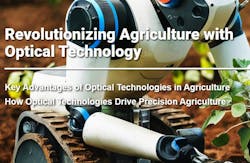Revolutionizing Agriculture with Optical Technology
Agriculture is experiencing a transformative shift thanks to cutting-edge optical technologies. By offering detailed insights into crop health and growth, these innovations are revolutionizing farming practices. This article delves into how optical sensors are reshaping agriculture, highlighting their benefits, and exploring specific technologies that are leading the change.
Modern agriculture is increasingly reliant on advanced optical sensors to optimize farming practices. These sensors, including hyperspectral and LIDAR technologies, provide real-time data on crop conditions, enabling more precise management of resources such as water, fertilizers, and pest control. The result is a more efficient, cost-effective, and productive farming approach.
Key Advantages of Optical Technologies in Agriculture
- Enhanced Efficiency: Optical sensors offer immediate insights into crop health, allowing farmers to target interventions precisely. This approach reduces waste and enhances the efficiency of cultivation, irrigation, and harvesting processes.
- Minimized Chemical Use: By pinpointing specific issues, optical monitoring systems reduce the need for broad-spectrum chemicals, protecting crops from unnecessary treatments and minimizing environmental impact.
- Cost Savings: Precision farming, driven by optical technology, provides substantial cost savings compared to traditional methods that often involve less precise and more costly practices.
- Boosted Yields: Early detection and targeted responses to crop conditions lead to healthier plants and higher yields, ultimately improving overall productivity.
